
The Do's and Don'ts of Wearing a Retainer
You should always follow your dentist's directions for wearing a retainer to ensure the investment you put into having a straight smile lasts for years to come. Adhering to the do's and don'ts of wearing a retainer is vital to keeping your teeth straight and your retainer in good condition.
There are many tips for what to do when it comes to your retainer, and keeping them in mind will ensure you don't have to pay to repair or replace a broken device. Use this guide to learn how to take care of retainers, including cleaning them, eating with them and wearing them.
What Can You Not Eat With a Retainer?
You should always remove your retainer or clear aligner from your mouth before eating any food. Removing your retainer for meals and snacks will help prevent it from being damaged or stained. You shouldn't eat overly hard, chewy or sticky foods with a permanent retainer because they can damage the wires and other parts, leading to costly repairs and more dental work.
If you have a permanent retainer that you're unable to remove when you eat, some specific foods to avoid with retainers include:
- Chewing gum
- Sticky candies like caramel, taffy and toffee
- Nuts
- Hard candy
- Ice
- Popcorn
- Tough, chewy foods like beef jerky
Avoid eating these foods and those like them to preserve your permanent retainer for as long as possible. You shouldn't eat any foods that apply significant pressure to the area where the orthodontist has bonded your permanent retainer. You may eat some harder foods if you can chew with the teeth that don't have the retainer on them. On the other hand, it's best to be safe and only stick with soft, easy-to-chew foods.
Even though you can't eat with a retainer, removable retainers and clear aligners offer the advantage of coming out during meals. You can eat any food you'd like as long as you first remove your device.

How to Clean Retainers
Cleaning your retainer frequently is vital to keeping it clear of plaque buildup, foul odors and discoloration. Clear aligners are especially prone to yellowing or staining, making them much more visible and less aesthetically pleasing. When cleaning your retainer, it's best to use EverSmile WhiteFoam™, a product specifically designed for clear retainers and invisible aligners. This cleaning method will protect your dental gear from scratches and bacteria.
How Not to Clean Retainers
Avoid the following other cleaning methods for your retainer to keep it in the best shape:
- Brushing your retainer with toothpaste: Most kinds of toothpaste have abrasive materials that can scratch your retainer and leave marks. Clear aligners will show the scratch marks and make the retainer more visible while you're wearing it. Scratches in retainers also create small pockets that make it easier for bacteria and plaque to build up within the device. If you're committed to using toothpaste to clean your retainers, only use low-abrasion options without any added color or dyes.
- Soaking or rinsing your retainer with mouthwash: Mouthwash effectively removes the bacteria in your mouth, but it's not exactly suitable for cleaning your retainer. Avoid soaking your retainer in mouthwash because you can't be sure it will completely clean your retainer. Most mouthwashes also contain colorings that can stain your clear retainers, making them more visible. Alcohol in mouthwash can also dry out the retainer, making it prone to breaking and bacteria growth.
- Brushing your retainer with baking soda: Baking soda is highly abrasive, which can scratch or damage your retainers. You can soak your retainers in a mixture of baking soda and water, but you should never brush your retainers with powdered baking soda.
- Using colored denture cleaners to wash your retainers: Soaking your retainers in denture cleaner is a suitable way to clean your retainers, as long as the cleaner isn't colored. Most popular denture cleaners have dyes in them that may stain your retainer over time. Instead of using these products, it's best to use colorless denture cleaners to prevent staining from occurring on your retainer.
- Using a high concentration of hydrogen peroxide to clean your retainers: Soaking your retainers in hydrogen peroxide will remove stains and kill bacteria. Keep in mind that you should only soak your retainers in a mixture of equal amounts of hydrogen peroxide and warm water. Rinse off your retainer after you let it sit in the solution so you don't swallow any hydrogen peroxide.
- Using bleach to clean your retainers: You should never use bleach to rinse or soak your retainers. Bleach is extremely harmful if consumed or if your skin or mouth experiences prolonged exposure to it. Bleach is also too strong for retainers and will cause permanent damage to the plastic.
- Brushing your retainer with a hard-bristled toothbrush: Hard-bristled toothbrushes can be too abrasive for your clear retainers and aligners. As a result of using them, your retainer may develop visible scratches. Instead, use soft-bristled toothbrushes to remove the debris and bacteria from your retainers.
- Using hot water to soak or clean your retainer: You should never use hot water to wash your retainer or invisible aligner. Hot water can warp your retainer's shape, which will impact how it fits over your teeth. Misshaped retainers can also misalign your teeth and cause permanent damage to your smile and retainer.
![How Should You Wear Retainers? [list]](https://cdn.shopify.com/s/files/1/0662/0303/files/03-How-should-you-wear-retainers-pinterest.jpg?v=1624299047)
How Should You Wear Retainers?
You should always wear your retainer according to what your orthodontist recommends. Dental providers advise most teenagers and young adults to wear their retainers while sleeping and between meals to strengthen the supportive tissue in their mouths. As your teeth adjust to the correct position, your orthodontist may ask you to wear your retainer less often. Keep in mind that the more you wear this device, the better it is for your teeth.
In most cases, you'll probably wear your retainer for the rest of your life, but you won't have to keep it in your mouth at all times. If your orthodontist recommends you wear your retainer less often, make sure you do it gradually and follow their instructions. These are the three stages of wearing a retainer:
- Full-time: After removing your braces, your orthodontist will most likely have you wear a retainer all the time. During this stage, you can only take out your retainer when you're eating. You may wear your retainer in this stage for the same amount of time you wore braces.
- Nightly: When your orthodontist approves of your progress, they may advise you to wear your retainer every night and take it off during the day. This phase is more manageable than full-time wear because you can go out and eat without bringing your retainer with you.
- Sporadic: Once your orthodontist approves, you can start wearing your retainer more occasionally. After wearing your retainer every night, you can start by taking it off one night a week. Gradually wear your retainer less often until you only use it a few nights a week.
What Happens if You Don't Wear Retainers?
After wearing your retainer for a few months, it's tempting to become less diligent with your regimen. When your schedule gets busy and you don't see any major shifts in your teeth, you may want to stop wearing this appliance. Keep in mind that doing so can erase the progression of your tooth alignment even after a short time of not wearing your retainer, resulting in tooth relapse.
What Is Tooth Relapse?
Tooth relapse is when your teeth return to the way they were before you had your braces installed. If you misplace your retainer or don't feel like wearing it, you can expect to experience tooth relapse. An overbite may return, and your teeth may crowd forward, removing any progress you made with braces.
In extremely rare cases, your retainer may still fit after a year of not wearing it. If you're lucky enough to have this happen to you, speak to your orthodontist and go back to wearing your retainer consistently as soon as possible to fix your tooth alignment.
Keep in mind that forgetting to wear your retainer for a long time means you won't be able to fit it over your teeth. If you notice a significant shift in your teeth alignment, it's best to make an appointment with your orthodontist as soon as possible. They can make a new retainer to hold your teeth in place. Even though your teeth won't be as aligned as they were when you first got your braces removed, you can retain the smile you have now.
Will Your Teeth Shift After a Week of Not Wearing Retainers?
Even a week without your aligners can subtly shift your teeth. But your retainer will still fit if you try to wear it after neglecting to put it in for a week.
While your retainer might feel a little tight, your teeth will adjust after wearing the device for a few hours. During this time, it's normal to feel some pain or tender gums and teeth, similar to how you felt when you first had your braces installed. Consult your orthodontist if you don't feel any relief after a few days.
The Do's and Don'ts of Clear Retainers
Clear retainers and invisible aligners need special care to maintain their appearance. You could follow these retainer tips for keeping yours in excellent condition:
- DO clean your retainer with WhiteFoam or another cleaning solution twice a day: Use WhiteFoam, which is the most effective way to clean clear retainers. You can also use colorless denture cleaner or a baking soda solution if you're in a pinch.
- DO wear and treat them as directed: Different clear retainers have specific care needs based on the manufacturer's recommendations. When your orthodontist fits your retainer, be sure to follow all the instructions they give you. They might want you to wear your retainer all day long or just at night.
- DO take your retainer out when eating: Certain foods can damage your retainers or get crumbs stuck inside of them. If you can remove your retainer, put it in its case before you start eating.
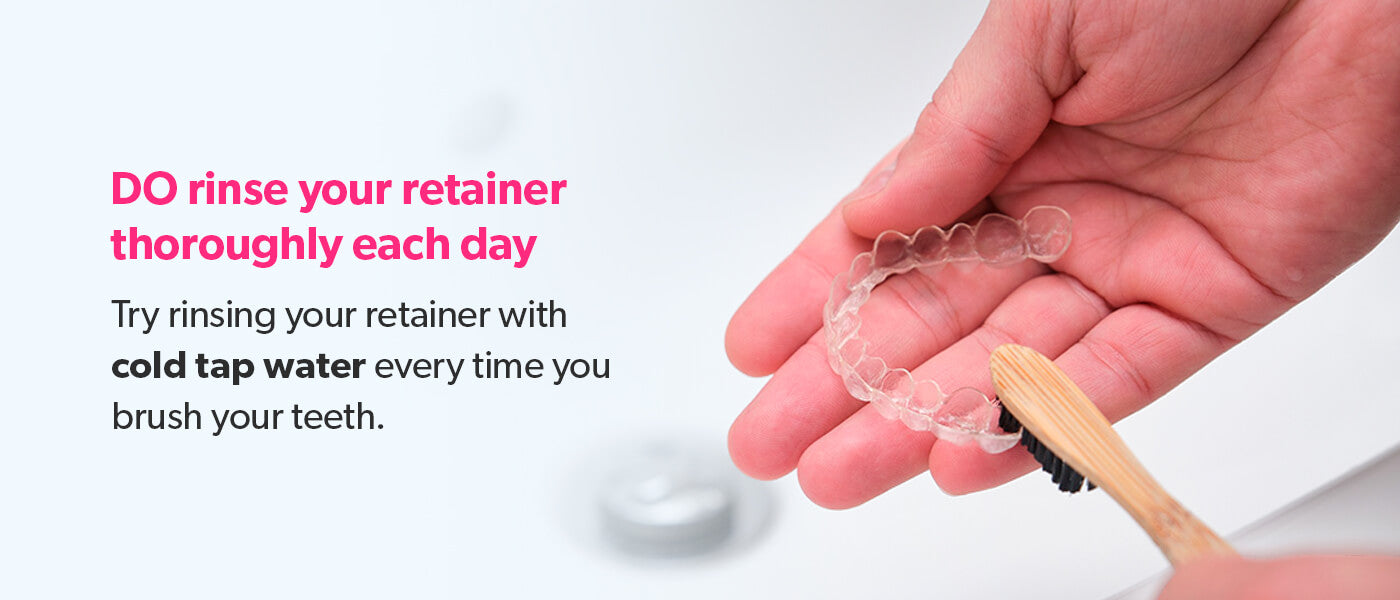
- DO rinse your retainer thoroughly each day: Try rinsing your retainer with cold tap water every time you brush your teeth. It also helps to brush your teeth after every meal and clean your device with WhiteFoam or similar cleaners first thing in the morning and before you go to bed.
- DO keep your retainer in your mouth or its container: The two safest places to keep your retainer are in your mouth and its protective case. Anywhere else leaves the plastic exposed to distortion, loss or damage.
- DO bring your retainer with you during orthodontist appointments: It's helpful to take your retainer to your orthodontist so they can assess how well it still fits you. They'll make any necessary adjustments during your appointment.
- DO put a phone number on your case: You should have contact information written on your retainer's protective case. If it ever goes missing, someone can call you when they find it.
- DO expect your teeth to change: Even if you're wearing a retainer, your teeth might shift. Tell your orthodontist if you have pain, swelling or tender gums.
- DO contact your orthodontist if there's a problem with your retainer: If you feel any cracks or tightness when your retainer is in your mouth, you should have your orthodontist look at it.
- DON'T eat sticky candy: Sticky candy can leave residue on your retainer and distort its shape as you chew.
- DON'T bite your retainer into place: When pushing your retainer into place, it's better to use your fingers. Biting down on your retainer could bend or crack it if you don't have it lined up correctly.
- DON'T wrap your retainer in a tissue: When your retainer isn't in your mouth, it's best to put it in its protective case. If you put it in a tissue, it could dry out or someone could accidentally throw it out.
- DON'T boil your retainer or sterilize it with hot water: Heat could distort your retainer's shape. Instead, you can use WhiteFoam or cold tap water to clean your retainer.
- DON'T play with the retainer in your mouth with your tongue: Do your best to leave your retainer alone to prevent damage to your device and your mouth.
Use EverSmile WhiteFoam to Keep Your Retainers and Clear Aligners Clean
Using the correct wearing and cleaning methods is essential to prolonging the life span of your retainer and keeping your teeth in excellent condition. One thing you should do when taking care of your clear retainer or aligner is clean it with WhiteFoam.
This cleaning product is convenient to use, and it's effective at getting rid of the bacteria on your retainer. As our WhiteFoam product deep cleans your aligners and gradually whitens your teeth, you'll have a fresh, clean mouth and a confident smile. Pick up a bottle of WhiteFoam today to start caring for your retainer or clear aligner the right way!

Reviewed By Michael Florman, Updated on 12/8/21
Related Articles
-
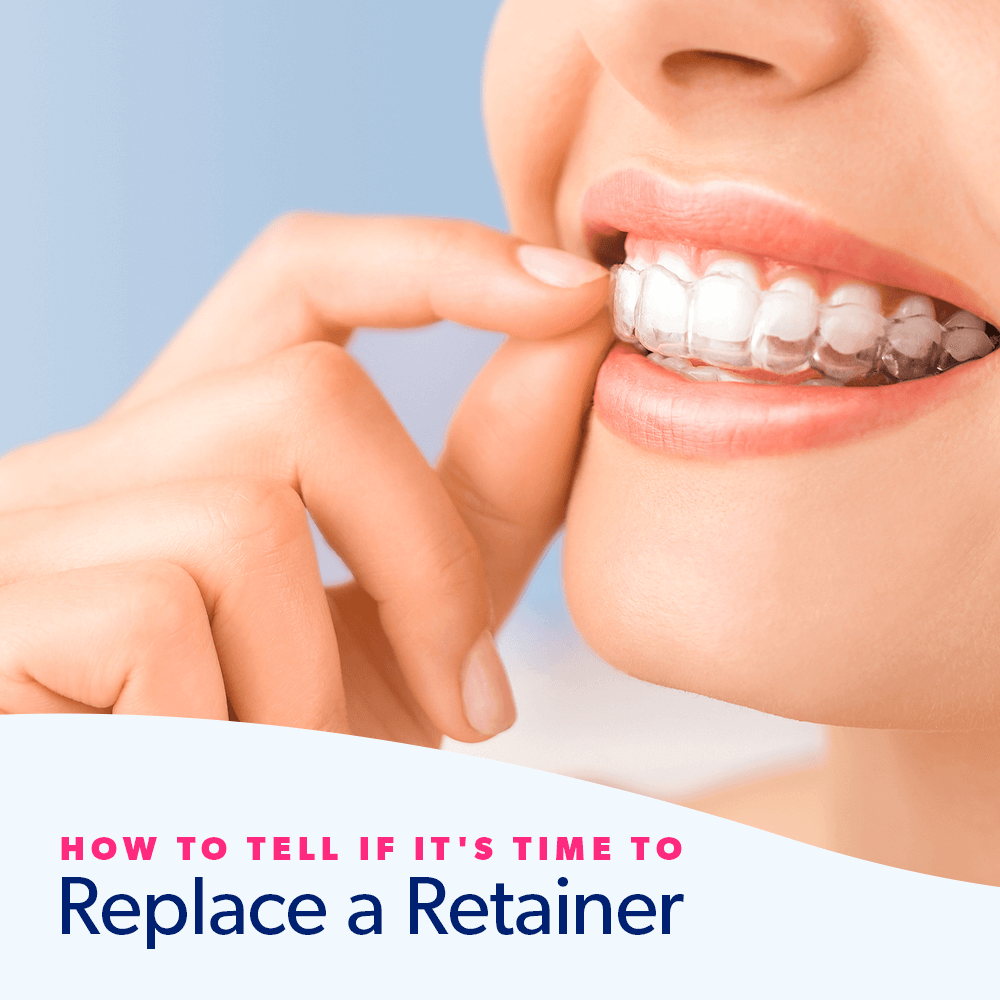
How to Tell if It's Time to Replace a Retainer
Retainers play an essential role in your post-orthodontic treatment plan. They help keep your teeth straight, maintaining the smile you invested in. Your orthodontist will likely recommend you wear a retainer for life because teeth are prone to shifting. Retainers usually only last a few...
Read More -
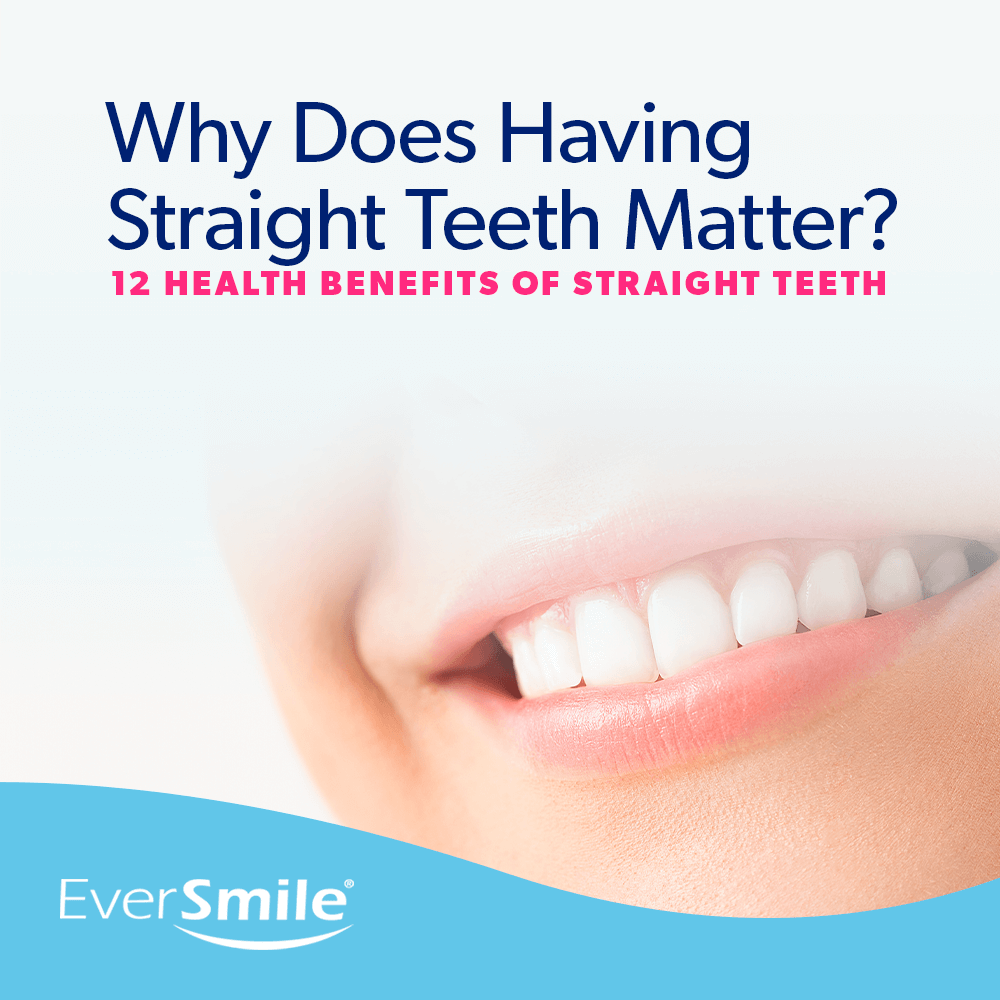
Why Does Having Straight Teeth Matter? 12 Health Benefits of Straight Teeth
If you're one of 81% of adults that think their teeth are unattractive when they see them in photographs, it might feel good to know you're not alone. But it still doesn't change how you feel. Many adults are self-conscious about their smiles because they don't...
Read More -
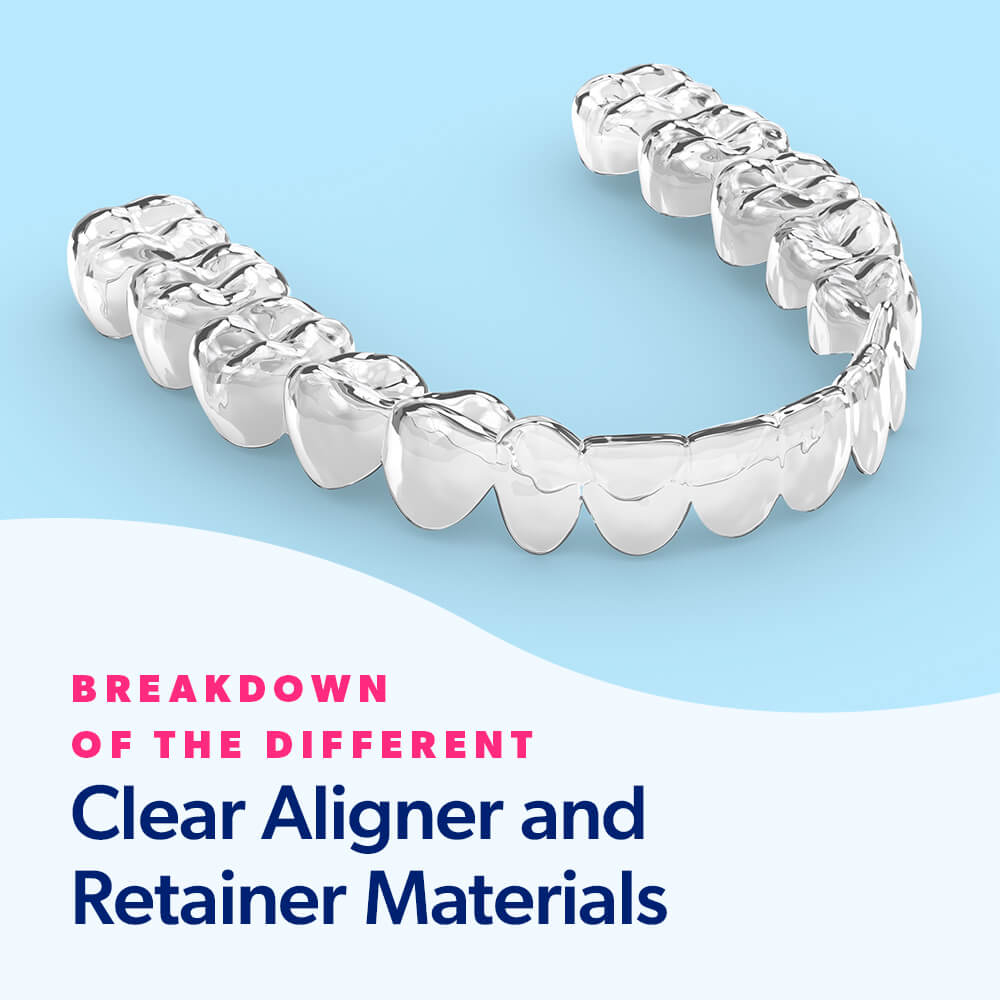
Breakdown of the Different Clear Aligner and Retainer Materials
Confidence begins with a smile. If you look in the mirror and aren't happy with your smile, now's the perfect time to change it! Clear aligners and retainers are more accessible and affordable than ever before. They straighten your teeth over time while being discreet...
Read More -
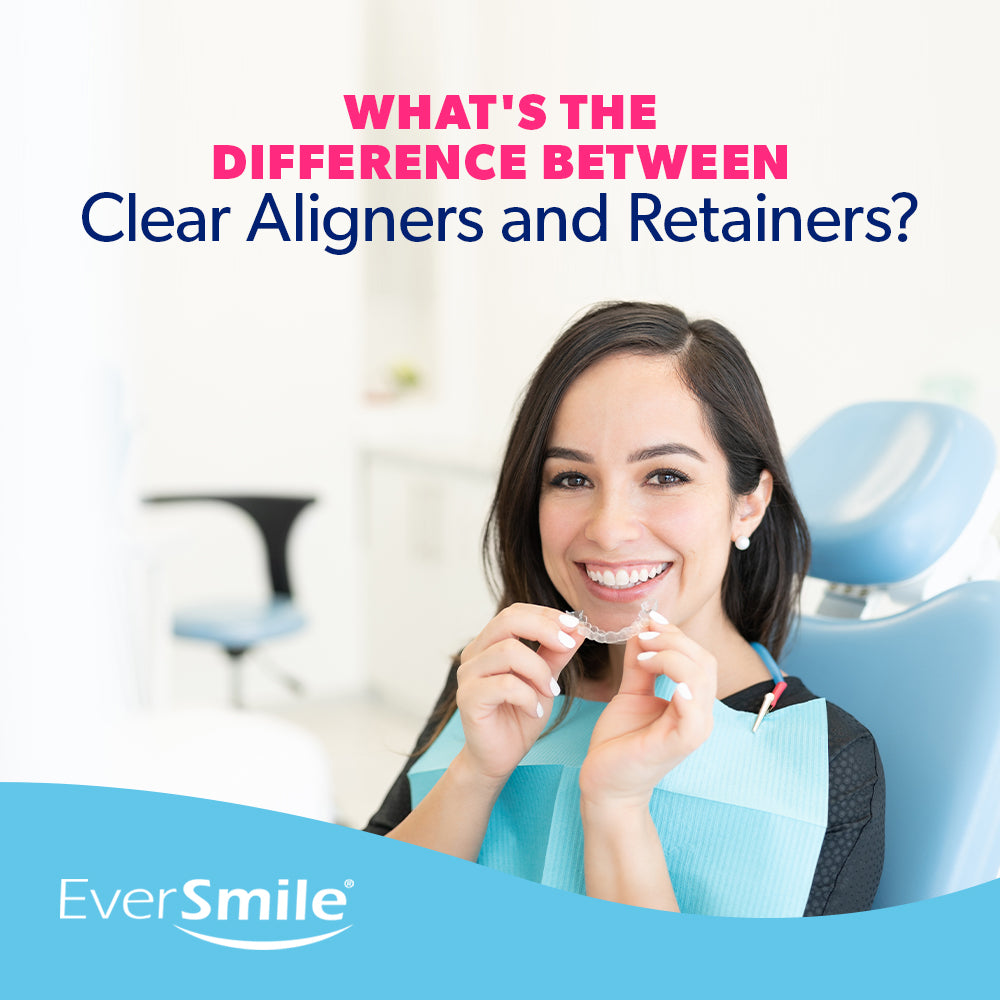
What's the Difference Between Clear Aligners and Retainers?
On the surface, aligners and retainers seem pretty similar. Both are made of clear plastic and used for orthodontic treatment. However, they have two different goals — aligners are meant to move your teeth into new positions, while retainers keep your teeth in their final...
Read More -

The Do's and Don'ts of Wearing a Retainer
You should always follow your dentist's directions for wearing a retainer to ensure the investment you put into having a straight smile lasts for years to come. Adhering to the do's and don'ts of wearing a retainer is vital to keeping your teeth straight and...
Read More -

14 Tips for a Healthier Smile
A smile is often one of the first things people notice about us, and many people take great pride in having an attractive smile. However, the importance of having a healthy smile goes beyond mere appearances. The health of our teeth and gums is directly tied...
Read More -
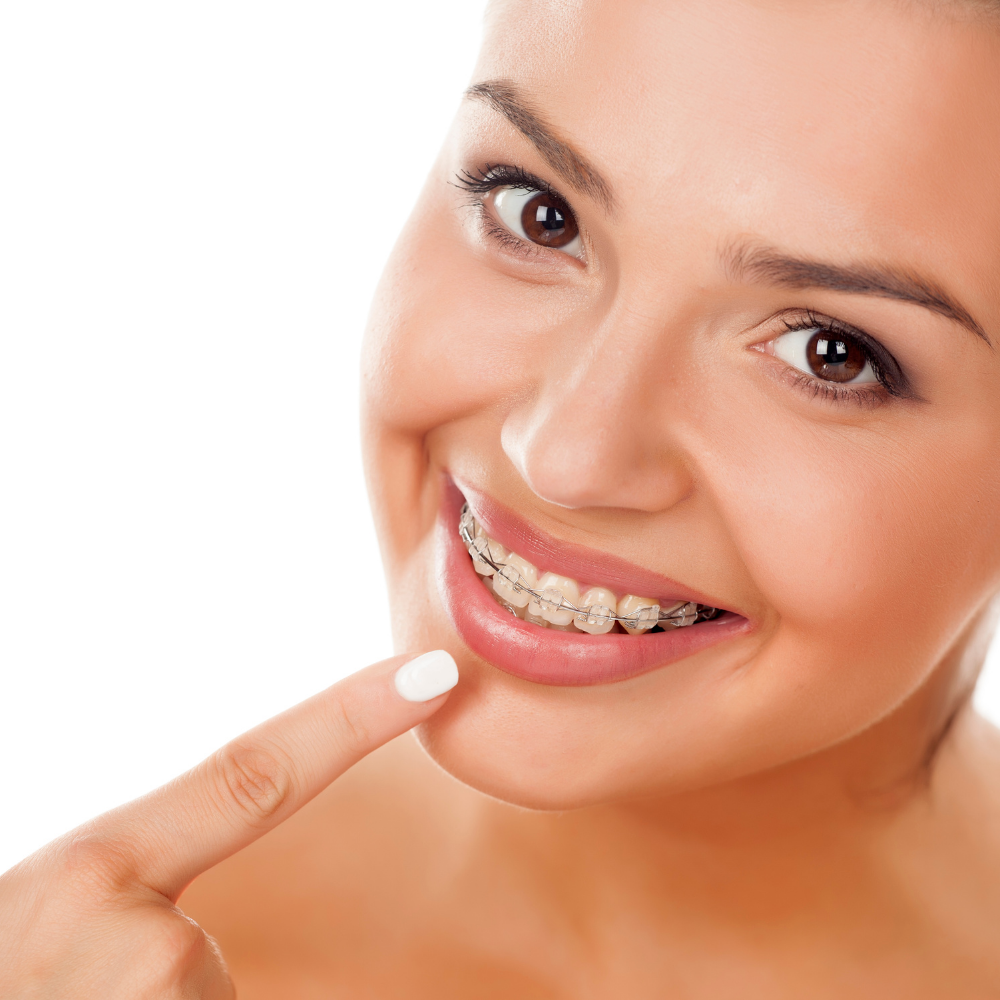
How to Get Rid of Yellow Staining From Braces
The moment your braces come off is a major high point in your life. You've spent a lot of time waiting and working to achieve the straight teeth and radiant smile you've always dreamed of. But sometimes when the braces come off, your smile isn't quite...
Read More -

How to Preserve Your Clear Retainers
Retainers are vital for straightening your smile. Even when you're done with aligners or braces, your retainers prevent your teeth from shifting back into their misaligned positions. Because these appliances are essential, it's useful to know how to preserve your clear retainers. You'll help them...
Read More -

The Science Behind Teeth Movement
Many people experience a moment where they notice something new about their physical appearance. This is especially true with teeth. You could smile at yourself in the mirror and realize that things are different than they were last time you checked. "Was that gap always...
Read More -
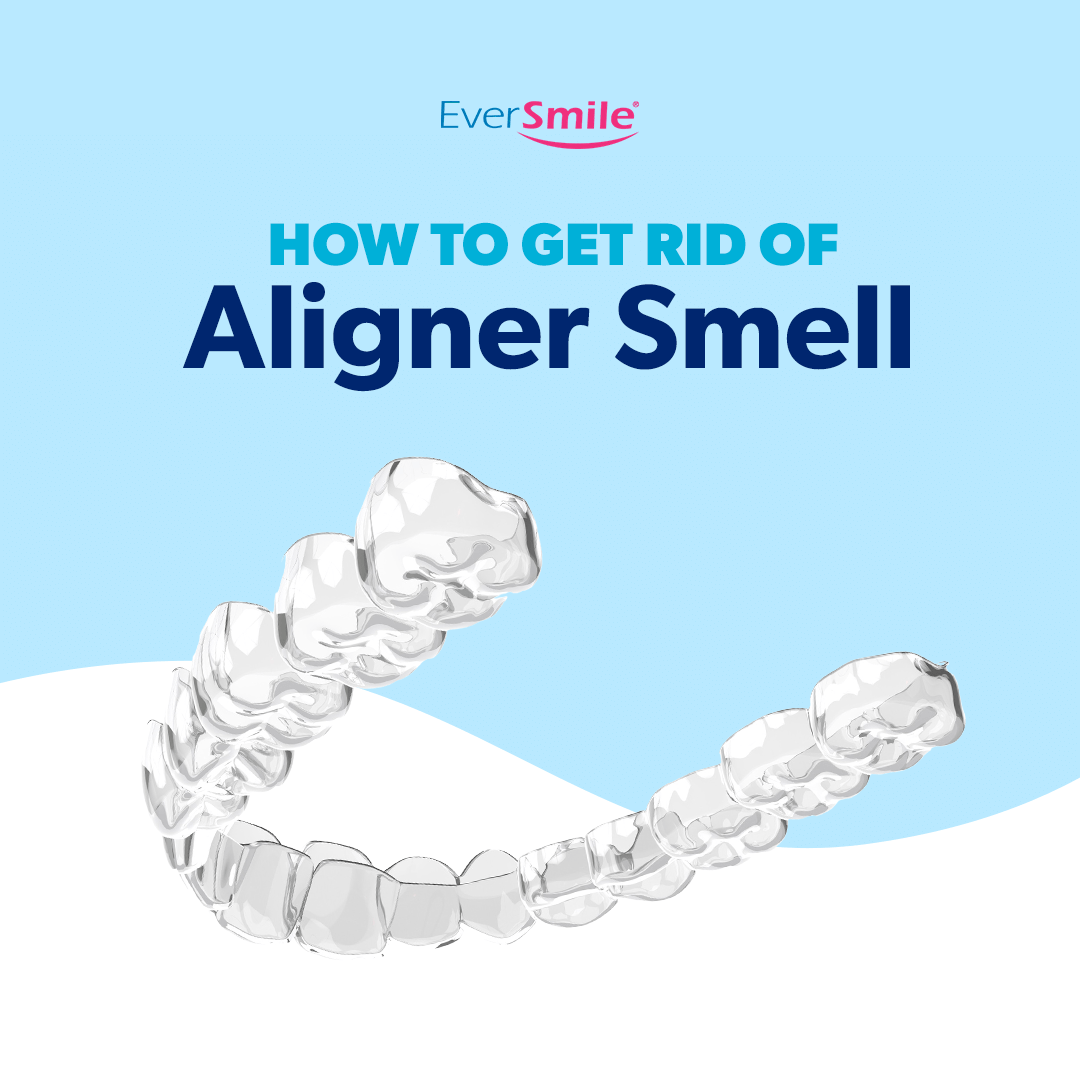
How to Get Rid of Aligner Smell
As a user of clear plastic aligners, you care about your teeth, and you want your smile to look great. The clear plastic makes the process discreet so you can wear your aligners with confidence while hanging out with friends and family or meeting people...
Read More -
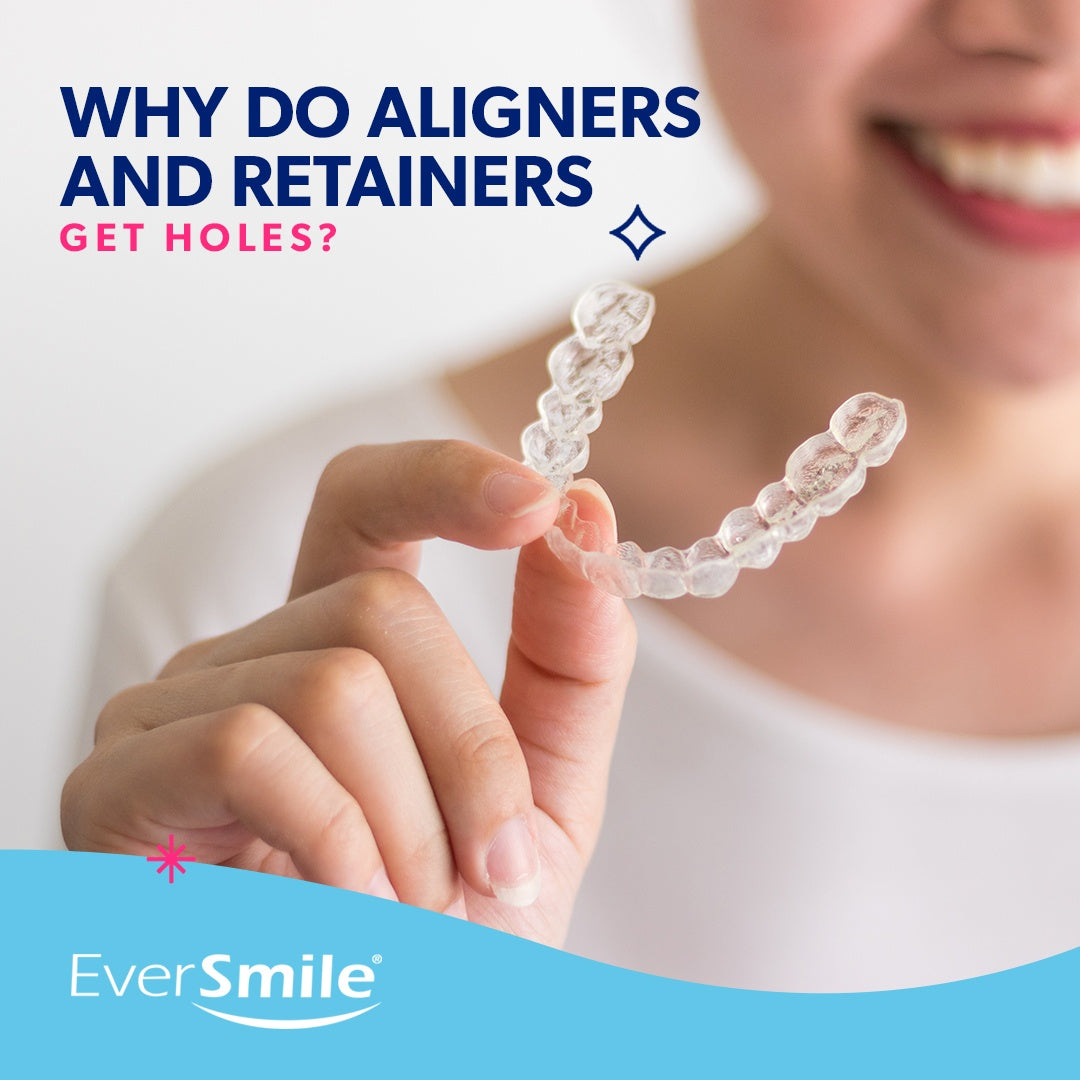
Why Do Aligners and Retainers Get Holes?
You wear your aligners almost all day, so it's not surprising that they can become damaged. But, why do aligners and retainers get holes and other damage? There are a few different ways this can happen. Take a look at the guide below to learn...
Read More -
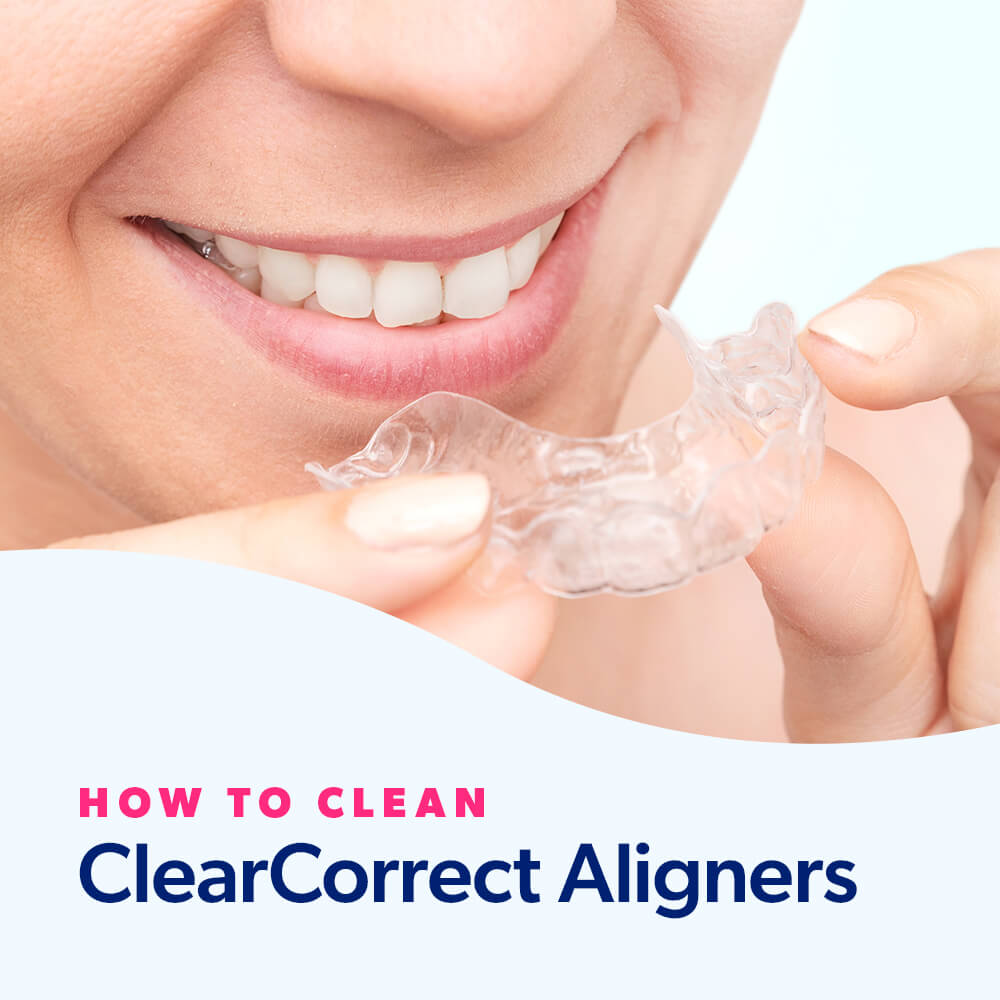
How to Clean ClearCorrect Aligners
Aligners are excellent alternatives to traditional wire braces. They discreetly straighten your smile, allow you to maintain your oral health more easily, and don't come with any food or drink restrictions. Because ClearCorrect aligners stay in your mouth for at least 22 hours a day,...
Read More -

Aligner Guide for New Users: Everything You Need to Know as a New Aligner Wearer
Clear aligners have emerged as an exciting alternative to traditional braces. Brands such as Invisalign offer the benefits of straighter teeth with the addition of a discreet appearance to fit any lifestyle. You can enjoy more freedom when wearing clear aligners, and you can smile...
Read More -

The Do's and Don'ts of Wearing a Retainer
You should always follow your dentist's directions for wearing a retainer to ensure the investment you put into having a straight smile lasts for years to come. Adhering to the do's and don'ts of wearing a retainer is vital to keeping your teeth straight and...
Read More -

How to Get Rid of Yellow Staining From Braces
The moment your braces come off is a major high point in your life. You've spent a lot of time waiting and working to achieve the straight teeth and radiant smile you've always dreamed of. But sometimes when the braces come off, your smile isn't quite...
Read More -

How to Preserve Your Clear Retainers
Retainers are vital for straightening your smile. Even when you're done with aligners or braces, your retainers prevent your teeth from shifting back into their misaligned positions. Because these appliances are essential, it's useful to know how to preserve your clear retainers. You'll help them...
Read More -
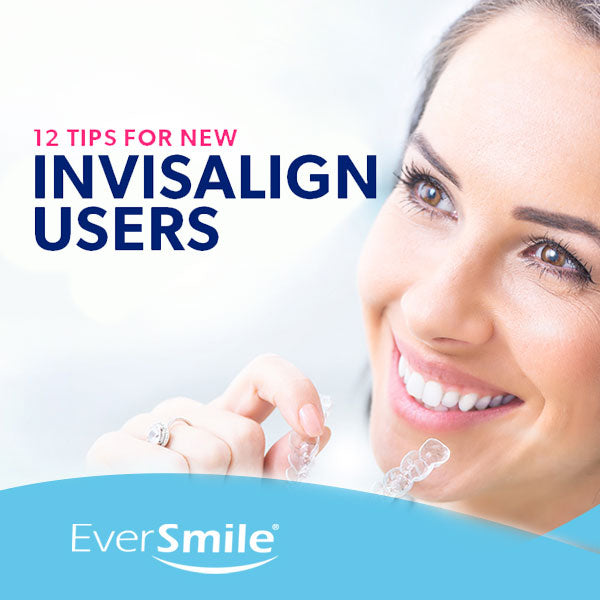
12 Tips for New Invisalign Users
Welcome to the world of Invisalign aligners! You've taken the next step toward straighter teeth and a more confident smile by subscribing to Invisalign treatment. But this is only the beginning. You'll be spending the next several months to a year wearing your aligners, and...
Read More -
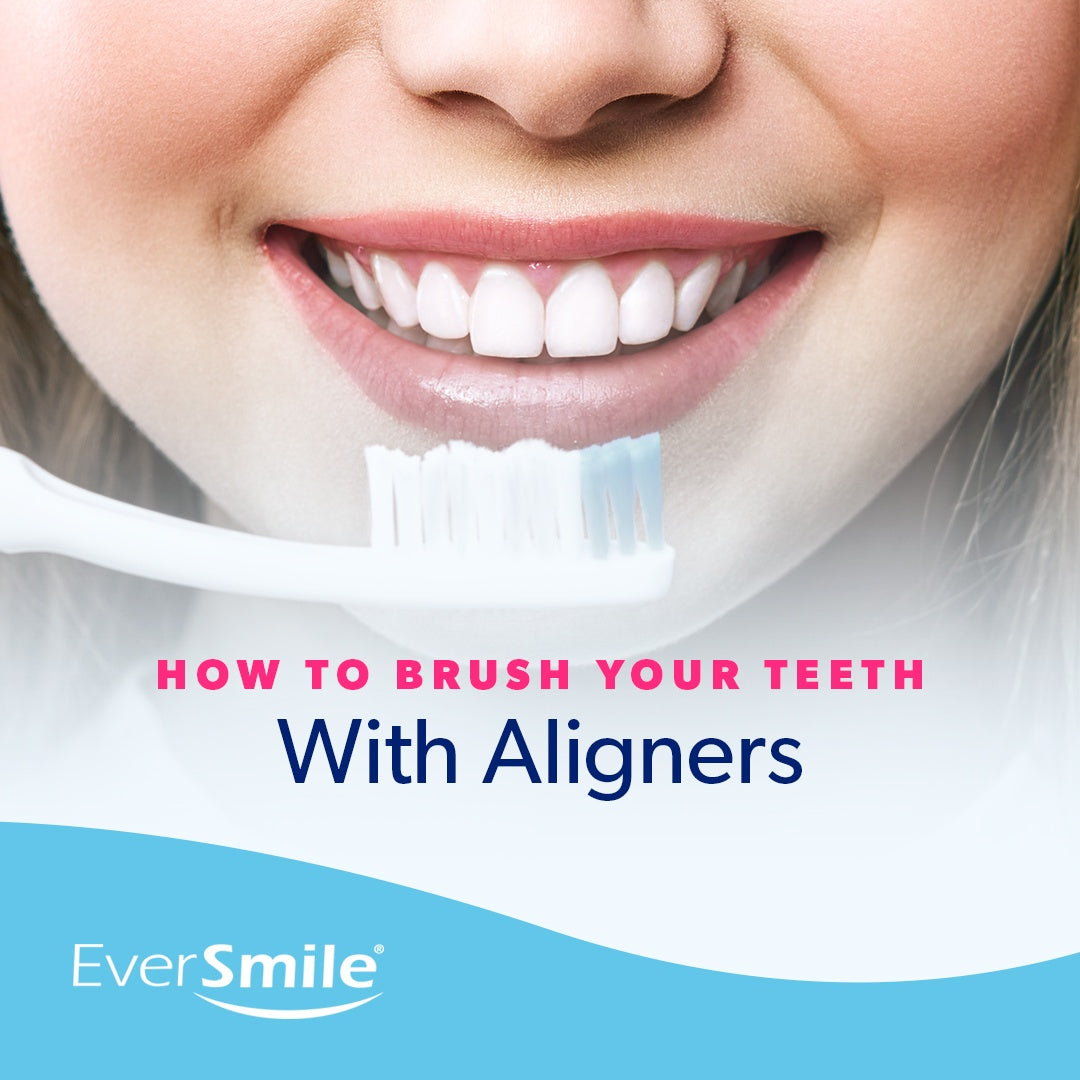
How to Brush Your Teeth With Aligners
Clear aligners are convenient and discreet ways to help straighten your smile. You can remove them whenever you need to, and they're more comfortable than traditional metal braces. It's essential to take care of your teeth, and while making sure they're straight is one way...
Read More -
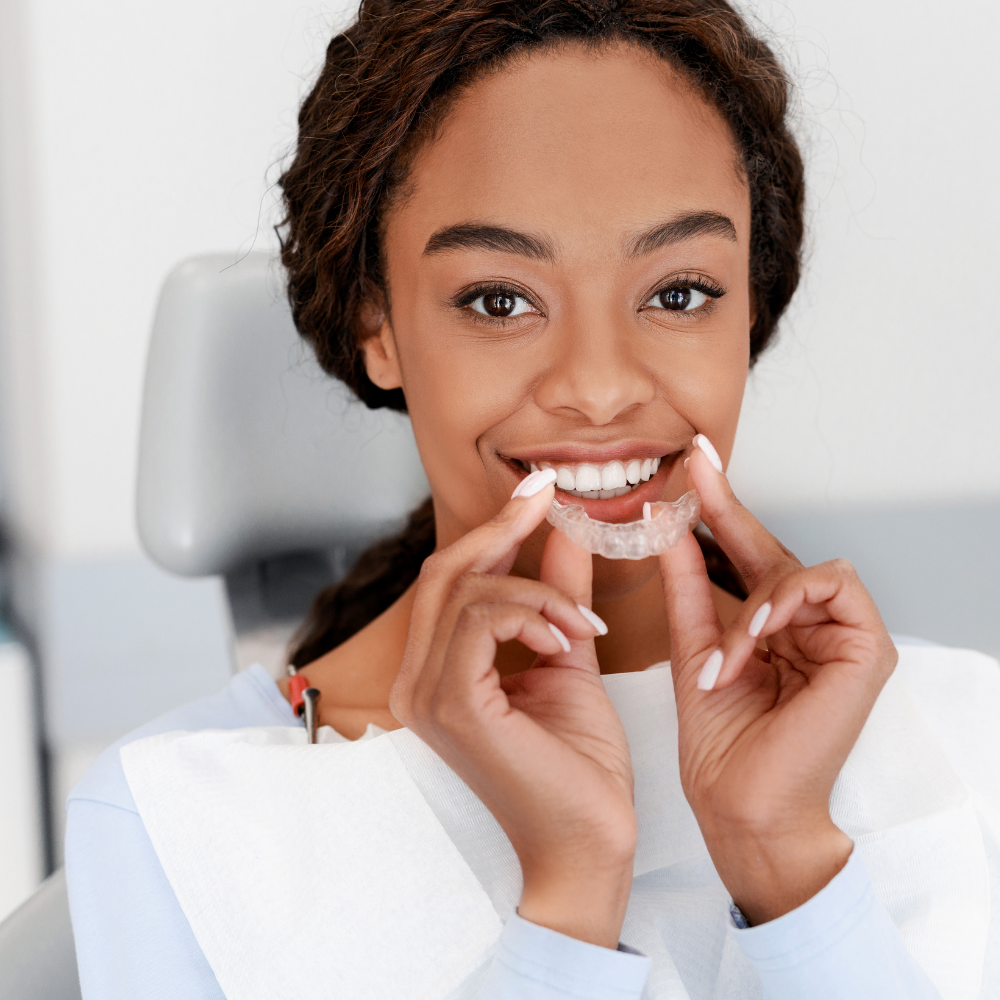
The Facts on Funk: Why Is My Clear Aligner Yellow?
You got clear aligners so that no one would notice them, but your invisible aligners are only invisible if they stay clear. Many things can stain your aligners or lead to your retainer turning yellow. Certain foods, such as dark-colored berries or sugary chocolates can lead...
Read More -
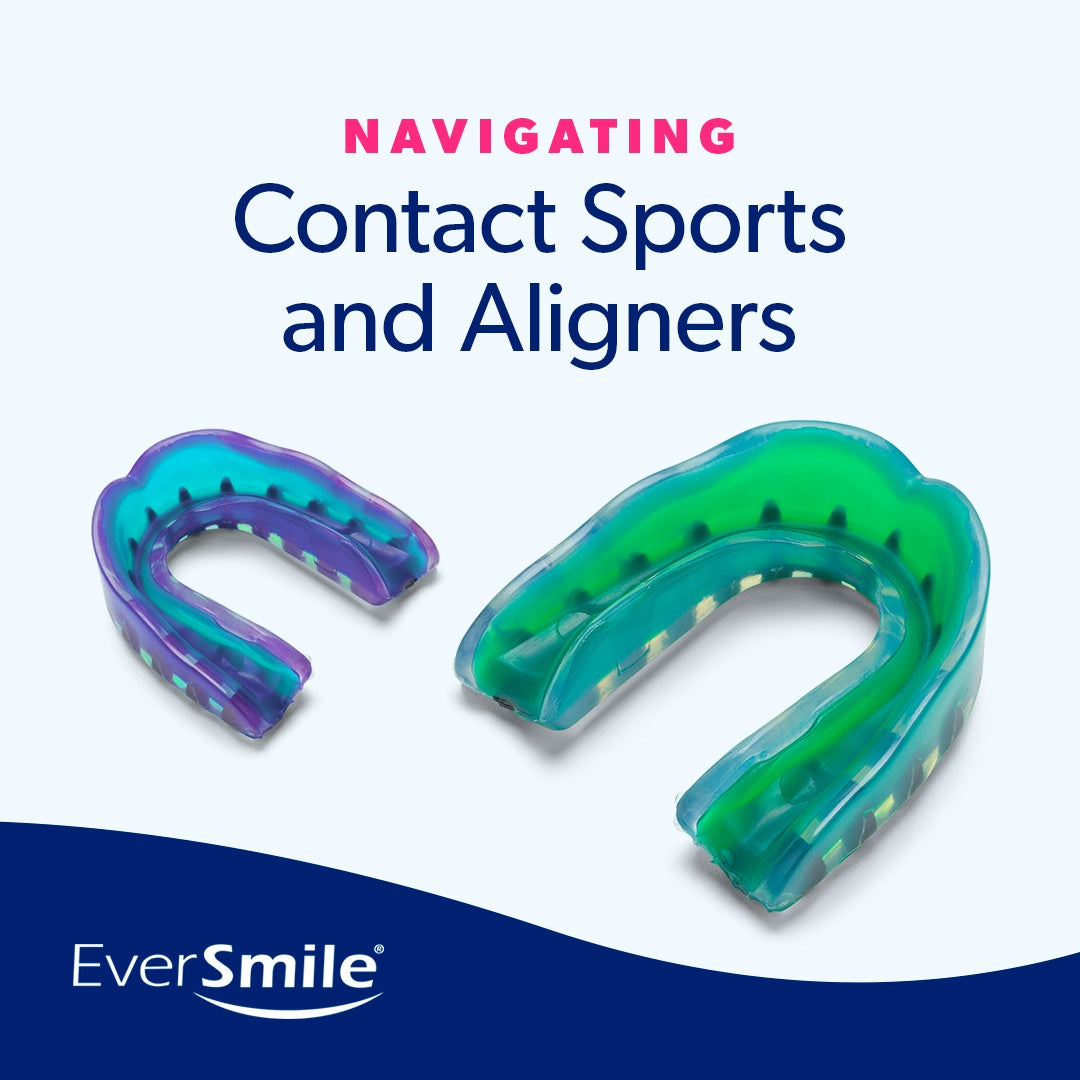
Navigating Contact Sports and Aligners
As an athlete, you have a lot on your mind when you're on the field or court. You're thinking about your opponent's next move, memorizing plays and doing everything you can to win. You don't want your teeth or aligners taking up valuable thought space...
Read More -

The Science Behind Teeth Movement
Many people experience a moment where they notice something new about their physical appearance. This is especially true with teeth. You could smile at yourself in the mirror and realize that things are different than they were last time you checked. "Was that gap always...
Read More -

How to Get Rid of Aligner Smell
As a user of clear plastic aligners, you care about your teeth, and you want your smile to look great. The clear plastic makes the process discreet so you can wear your aligners with confidence while hanging out with friends and family or meeting people...
Read More -

Why Do Teeth Come in Crooked?
If you've ever looked at your smile in the mirror and noticed misaligned teeth, you've probably wondered why teeth come in crooked. Is there any way to correct this issue? Luckily, you have a few options for fixing your smile, but there are even more...
Read More
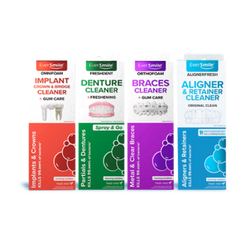
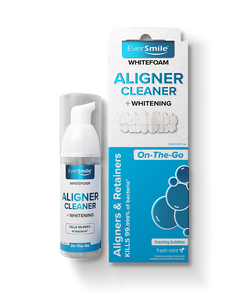
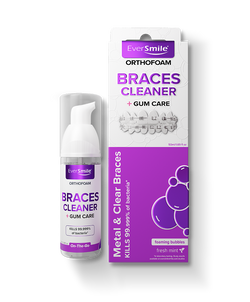
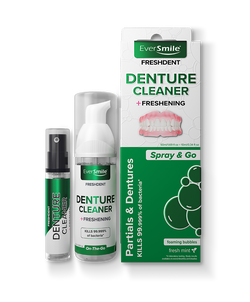

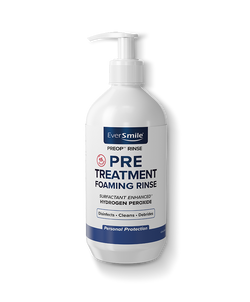




















Post a Comment!